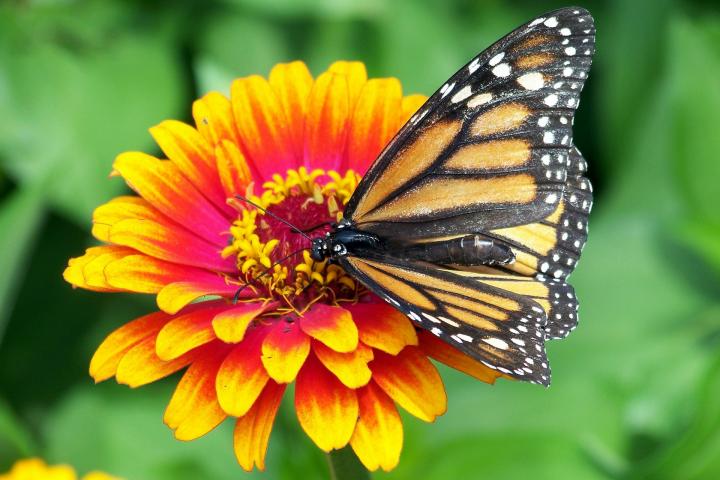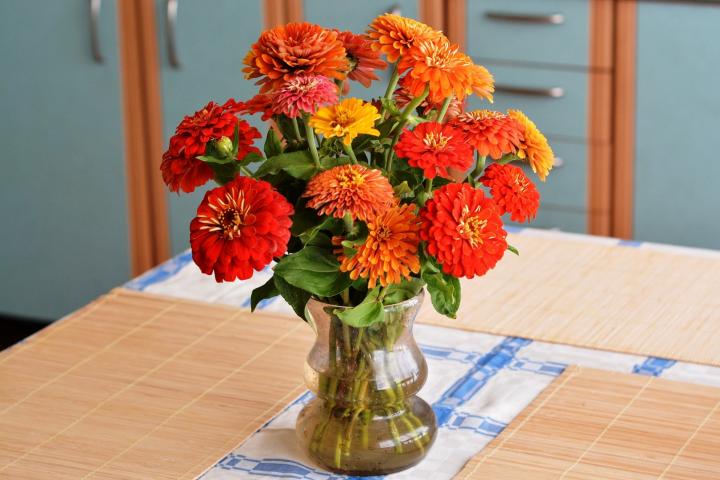Zinnias are one of the easiest flowers to grow, as they grow quickly and bloom heavily. Plus, they’ll produce flowers all the way up to the first hard frost of fall. Zinnia flowers can create a massive burst of color in your garden, so consider trying them this year!
About Zinnias
Zinnias are annuals, so they’ll grow for one season to produce flowers and seeds, but the original plant will not come back in subsequent years. They have bright, solitary, daisy-like flowerheads on a single, erect stem, which makes them great for use as a cutting flower or as food for butterflies.
Types of Zinnias
The most popular zinnia species is Zinnia elegans, which has been bred to produce a great number of unique varieties.
There are three main kinds of zinnia flowers: single, semidouble, or double. The distinction between these forms comes from the number of rows of petals and whether or not the center of the flower is visible:
- Single-flowered zinnias have a single row of petals and a visible center.
- Double-flowered zinnias have numerous rows of petals and their centers are not visible.
- Semidouble-flowered zinnias are somewhere in-between, with numerous rows of petals but visible centers.
In addition to these forms, zinnia flowers come in a number of shapes, including “beehive,” “button,” and “cactus.” The plants themselves also come in different heights: taller varieties are best for the background of a garden bed, while shorter varieties work well along a border. There’s really a zinnia for every garden!
Plant zinnias in an annual or mixed border garden. Smaller zinnias are suitable for edging, windowboxes, or other containers.












Comments